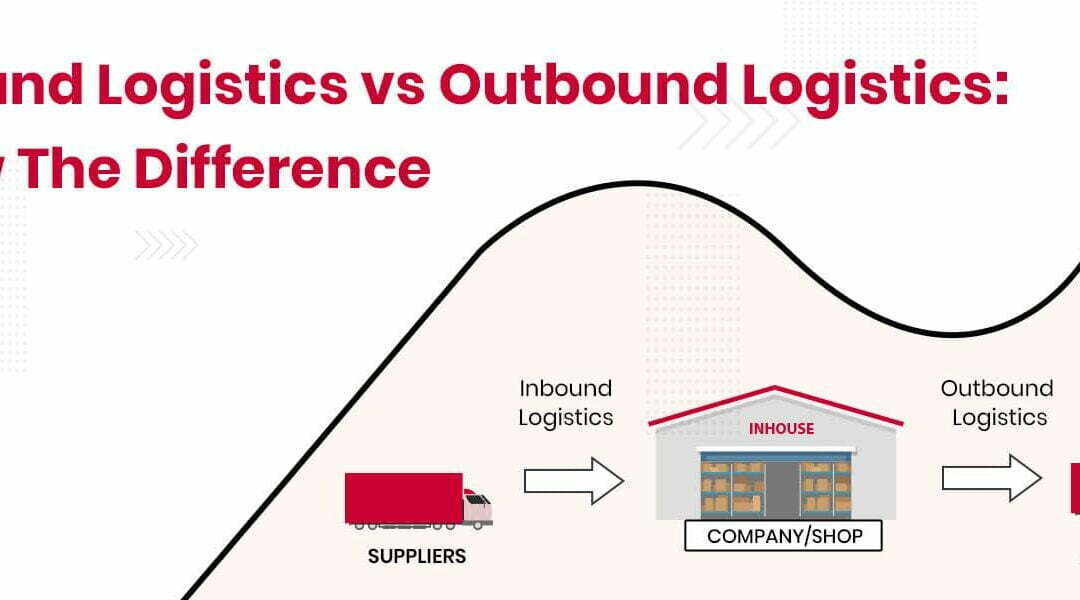The rise in online retail sales is correlated to the increase in consumer purchasing power and the ease with which they can shop from home. However, it also means a balanced growth of shipment volume to be managed by retailers’ distribution centres and last-mile carriers. The primary supply chain needs to be extended, requiring an optimized inbound logistics process.
A business must have strong inbound and outbound logistics to attain success as these processes greatly affect a business’ production, profits, and customer service. While it can be challenging and costly to get logistics right, putting the right controls in place can help a business become successful.
Inbound and Outbound Logistics: An Overview
Inbound logistics and outbound logistics are two different types of supply chain management. Inbound logistics refers to the process of getting goods from suppliers to the company, while outbound logistics is the process of getting goods from the company to customers. While they may seem similar, there are some key differences between inbound and outbound logistics that you should know.
Inbound logistics starts with the supplier. The company needs to establish relationships with suppliers and negotiate contracts for the goods they need. They also need to plan for the transportation and storage of the goods and coordinate with the suppliers on delivery times. Once the goods arrive at the company, they need to be stored until they are needed.
Outbound logistics is the opposite of inbound logistics. It starts with the company and ends with the customer. The company needs to plan for how it will get the goods to the customer, whether that’s through shipping, delivery, or pick-up. They also need to track the goods as they move through the supply chain and ensure that they arrive at the customer on time.
Key Differences between Inbound and Outbound Logistics
There are some key differences between the two logistics processes that you should know. Inbound logistics is all about getting goods from suppliers to the company, while outbound logistics is all about getting goods from the company to customers. Inbound logistics requires coordination with suppliers, while outbound logistics requires coordination with customers. Inbound logistics is focused on transportation and storage, while outbound logistics is focused on shipping and delivery.
So, what’s the key difference between these two types of logistics? Inbound logistics is all about bringing goods and materials into a company, while outbound logistics is about sending goods and materials out of a company.
Here’s a closer look at the main differences between these two types of logistics.
Key Comparisons
- Inbound logistics is often seen as the first step in the supply chain, while outbound logistics is the last step. However, both processes are important to the success of a company.
- Inbound logistics is typically managed by the purchasing department, while outbound logistics is typically managed by the shipping department. However, there is some overlap between these two departments.
- Inbound logistics is generally more complex than outbound logistics, as it involves more stakeholders and more moving parts. Outbound logistics is typically less complex, as it doesn’t involve as many stakeholders and there are fewer moving parts.
- Inbound logistics is more likely to be disrupted than outbound logistics, as there are more opportunities for things to go wrong. Outbound logistics is less likely to be disrupted, as there are fewer opportunities for things to go wrong.
- Inbound logistics is more important in industries where product quality is important, as it’s more difficult to ensure quality control when goods are coming into a company than when they’re going out. Outbound logistics is more important in industries where cost is important, as it’s more expensive to ship goods out of a company than it is to bring them in.
Key Benefits of Inbound Logistics
Inbound logistics is a critical part of the supply chain and an important part of any business. It can be complex, but there are many ways to make it more efficient. The most important thing is to have a clear understanding of your company’s goals and objectives, post which you should consider using technology to automate and track shipments.
- Higher product quality
- Reduced inventory costs, speedy production
- On-time deliveries
- Steady production rates
- Ease and lower cost of shipping and receiving
- Better inventory management
- Ability to spot supply chain problems
- Ability to stay competitive
- Improved customer satisfaction
Key Benefits of Outbound Logistics
While some businesses handle their logistics operations, outsourcing outbound logistics provides businesses with a number of advantages. Businesses can save huge on costs as they no longer need to invest in their own infrastructure and resources by outsourcing the requirement. Plus, you can benefit from the latest technology and processes, which can further improve efficiency and cost-effectiveness.
- Faster deliveries
- More on-time deliveries
- Reduced delivery failures
- Fewer order cancellations
- Maximized transportation efficiencies
- Lower cost to the company
- Reduced inventory costs
- Higher customer satisfaction
- Improved brand reputation
Inbound and outbound processes are important to the success of a company. You should outsource your eCommerce fulfilment operations to a 3PL service provider to yield the best benefits. You can leverage a smart logistics management platform to gain real-time visibility into your inbound logistics operations. On the other hand, tech-enabled logistics platforms like NimbusPost can help you handle outbound logistics with maximum output.
Conclusion
Inbound logistics is the process of managing the flow of incoming goods and materials into a company, whereas outbound logistics is all about managing the flow of outgoing goods and materials from a company. As it’s important to manage both kinds of operations efficiently, you must pay attention to both processes equally.




